Introduction
Of all the Amstrad CPC’s, the CPC 472 definitely fascinates me. Amstrad sold the CPC 464 model in Spain as elsewhere in Europe but due to local laws and added tariffs, Amstrad was forced to change how the original CPC 464 was sold in Spain during a short timeframe, and therefore their were at least 5 distinct incarnations of the Amstrad CPC 464 sold in Spain, listed below, 2 of which were briefly branded as CPC 472.
- CPC 464 with British keyboard and Basic 1.0
- CPC 472 with British keyboard and Basic 1.1
- CPC 472 with Spanish keyboard and Basic 1.0
- CPC 464 with Spanish keyboard and Basic 1.0
- CPC 464 with Spanish keyboard, Basic 1.0 and new Amstrad logo
Below you can see a CPC 472 with a British keyboard (this is the rarest CPC 472)
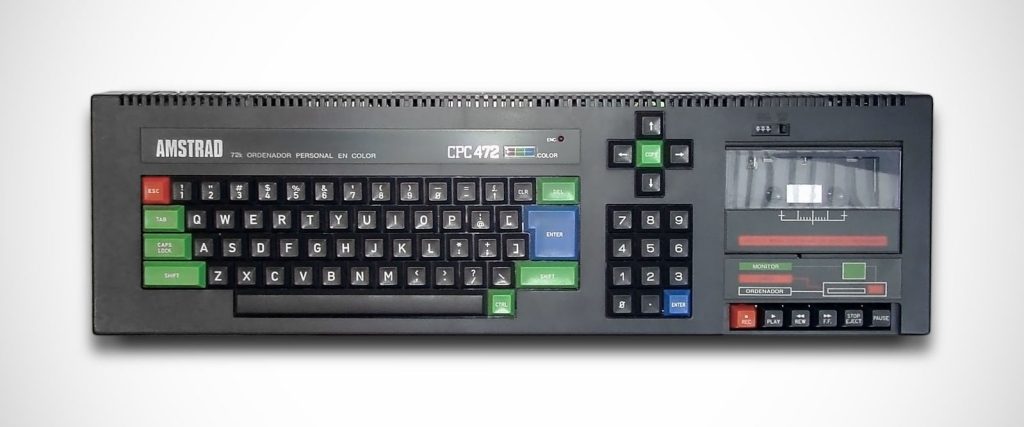 Below is a CPC 472 with a Spanish keyboard
Below is a CPC 472 with a Spanish keyboard
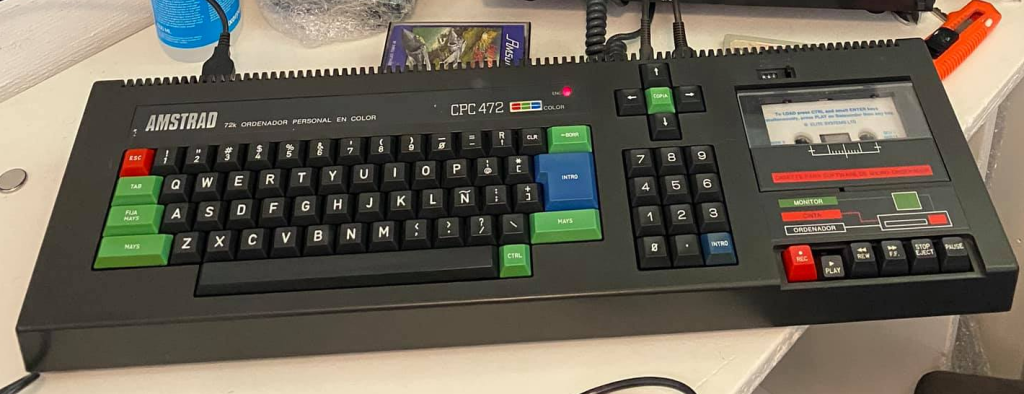 Below is a Spanish keyboard CPC 464 (which would have been after the CPC 472 were produced)
Below is a Spanish keyboard CPC 464 (which would have been after the CPC 472 were produced)
 Below is a very late Schneider branded CPC 464 with a Spanish keyboard
Below is a very late Schneider branded CPC 464 with a Spanish keyboard
 and below is the newer Amstrad logo branded 464 with the Spanish keyboard.
and below is the newer Amstrad logo branded 464 with the Spanish keyboard.

So what was the CPC 472 actually ? The CPC 472 versions had an extra 8k RAM which was unused, 64k+8k = 72k. That extra 8k was enough to avoid the 90 Euro tariff (approx 15,000 pesetas).
These CPC’s however were all CPC 464 under the hood in looks, motherboard and more, they did have an additional daughter board soldered on to make it look like the total of 72k was real, but it was fake. This was a 64k computer with different versions of Basic, different boot roms, and different languages on the keyboard.
Below you can see the hack, with the Spanish ROM. This photo is from a late CPC 472 with the ‘ene’ key and Spanish keyboard.
40037 32K ROM; BIOS and BASIC for CPC464 and Late-CPC472-models (Spanish)
Timeline
Based on the info I’ve found so far, I’ve updated an existing Amstrad Wiki timeline with 472 specific information, it’s approximate, so if you have more accurate info let me know.
The gap of possible sales of the CPC 472 would probably have started sometime after August 28th 1985 + 2 weeks if you take into account the amount of time engineers had to create the workaround.
Sales of the CPC 472 would presumably have ended January 1st, 1986 when Spain joined the EEC as therefore the tariff would no longer apply, and therefore no justification for the CPC 472 would exist. So in the timeline below, I am guessing that the CPC 472 was actually offered for Sale some time after August 25th/September 3rd 1985 and up until January 1986.
Note: If anyone has a CPC 472 that was purchased before July 17th 1985 or after December 1985, then please let me know and include a photo of the back plate including the serial number for proof. I will then update this CPC 472 specific timeline.
That said, if there were any unsold stock of 472’s left over after January 1st then we may have seen them sold after this time. This would mean that the timeline for CPC 472 availability would be approximately from August 28th – December 31st 1985.
A closer look
The first 464 sold in Spain had a British keyboard, Basic 1.0 and looked just like a normal CPC 464. Below is a photo of one which I found on the Spanish sales site Wallapop today.
Then on July 17th 1985, a law (or royal decree) was signed into Spanish law declaring that all computers that were imported into Spain had to have an additional tariff (extra customs charge) added. This was probably related to a Spanish company called Eurohard which wanted to sell their 1 million Euro stock of Spanish made Dragon mini computers to the home market.
This tariff added approximately 90 Euros per CPC sold in Spain and would have been the end of the CPC in that market.
However, August 28th 1985, the law was amended, as companies that imported PC hardware in Spain lobbied the government to add an addendum to make the tariff only applicable for imported computers with less than or equal to 64k of RAM.
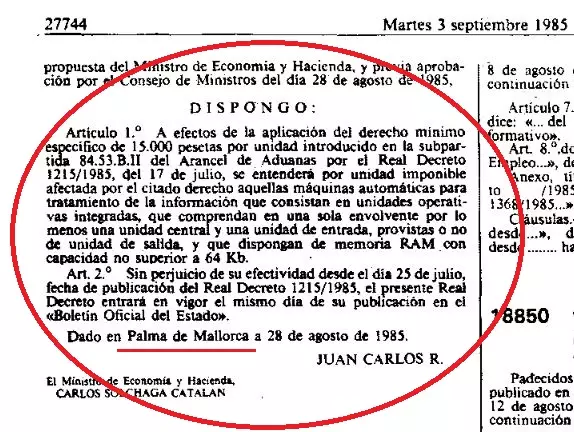 This effectively meant that any CPC with more than 64k could be sold without a tariff. This was enough for the Amstrad engineers to come up with a justification for the extra 8k RAM in the CPC 472, even though the actual RAM was unused.
This effectively meant that any CPC with more than 64k could be sold without a tariff. This was enough for the Amstrad engineers to come up with a justification for the extra 8k RAM in the CPC 472, even though the actual RAM was unused.
The CPC 472 serial number
The serial number on the back of your CPC 472 reveals where and when it was made. Thanks go to the cpcwiki for this info. The serial number used on CPC 472’s should be in the following format:
“123456 Kxx-yy”
- K is the country of production (K for Korea – South Korea)
- xx is the plant (31 or 32 are the two codes that typically found).
- yy is the year and month of leaving the factory. First digit represents the year (4 for 1984, 5 for 1985), second digit represents the month (1 through 9 = January-September, X, Y and Z= October, November and December)
- Finally, the 6-digit number is the actual serial production sequence number fr that factory and year
Examples:
- 93132 K32-54 => Korea factory 32 – April 1985 (a 664)
- 218 167 K32-5X => Korea Factory 31 – October 1985 (a 6128)
Below you can see three CPC 472 genuine serial numbers.
Serial: 247129 K31 – 5X (October 1985)
Serial: 242265 K3- 5- (1985)
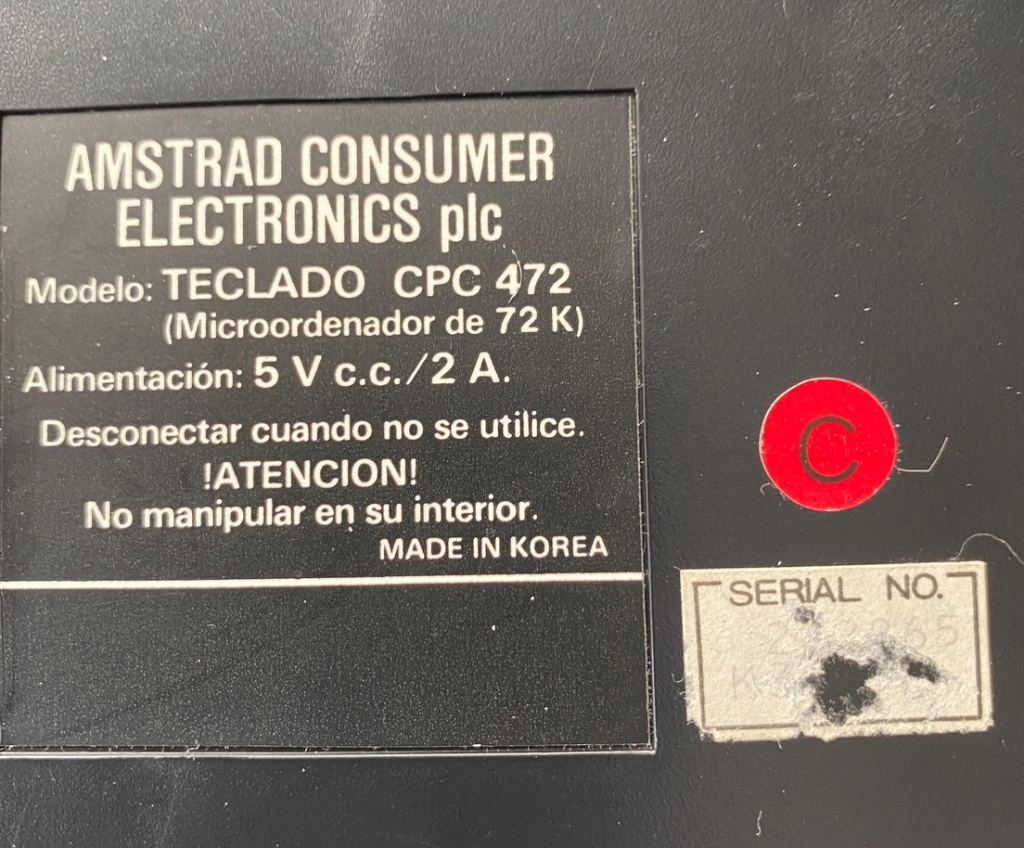 Serial: 283097 K31 – 5Z (December 1985 )
Serial: 283097 K31 – 5Z (December 1985 )
Where can I buy one ?
Try ebay.es or es.wallapop.com, keep in mind you’ll probably need to find a friend in Spain to assist you with the purchase if it’s from the Wallapop site. They range in price from 99 Euros up to many hundreds more, depending on condition and what they come with.
Conclusion
If you compare the timeline (and locations) of where CPC 472’s were actually sold to that of the Amstrad CPC 664, I think this device is actually rarer than the coveted CPC 664, and it should get that recognition. My advice ? Buy one now, while you can. I suspect that they will go up in price.
Related reading
- Wiki CPC 472
- Decode serial number
- Amstrad CPC 472
- https://www.youtube.com/watch?v=_ErfWfjN9iU
- Keyboard versions
- Amstrad part numbers

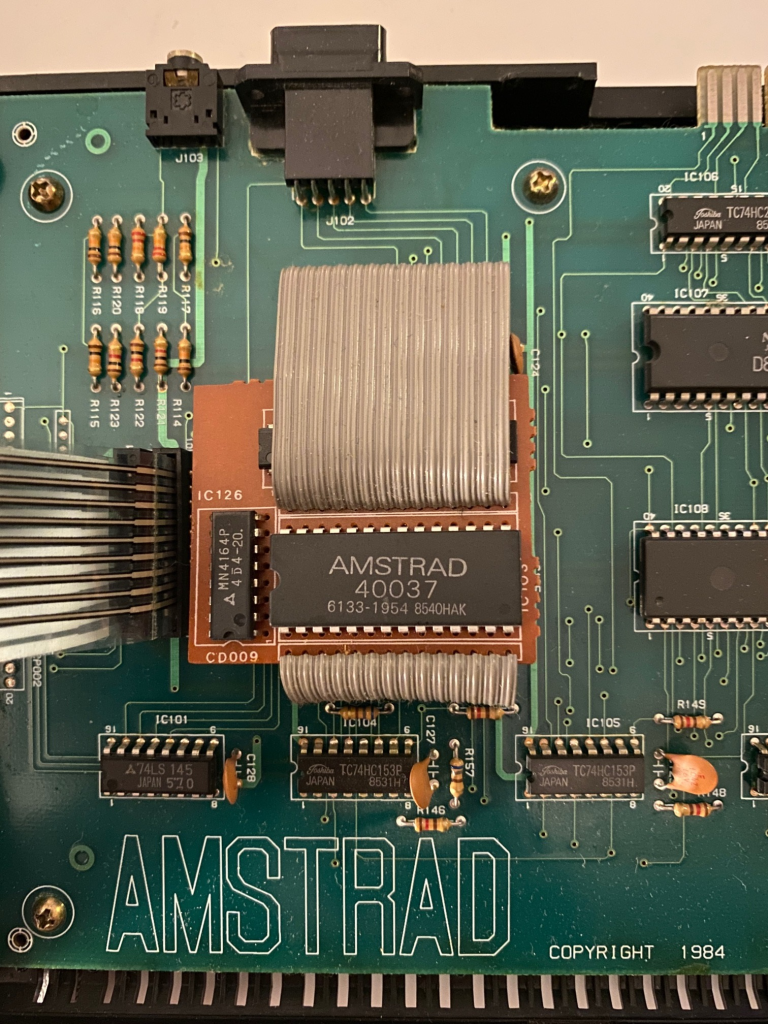

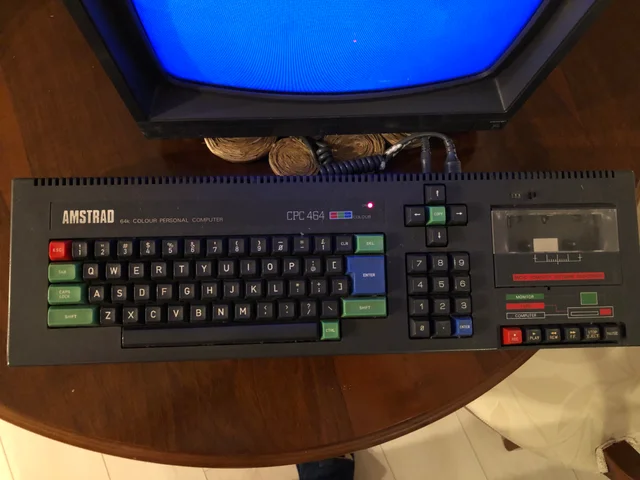
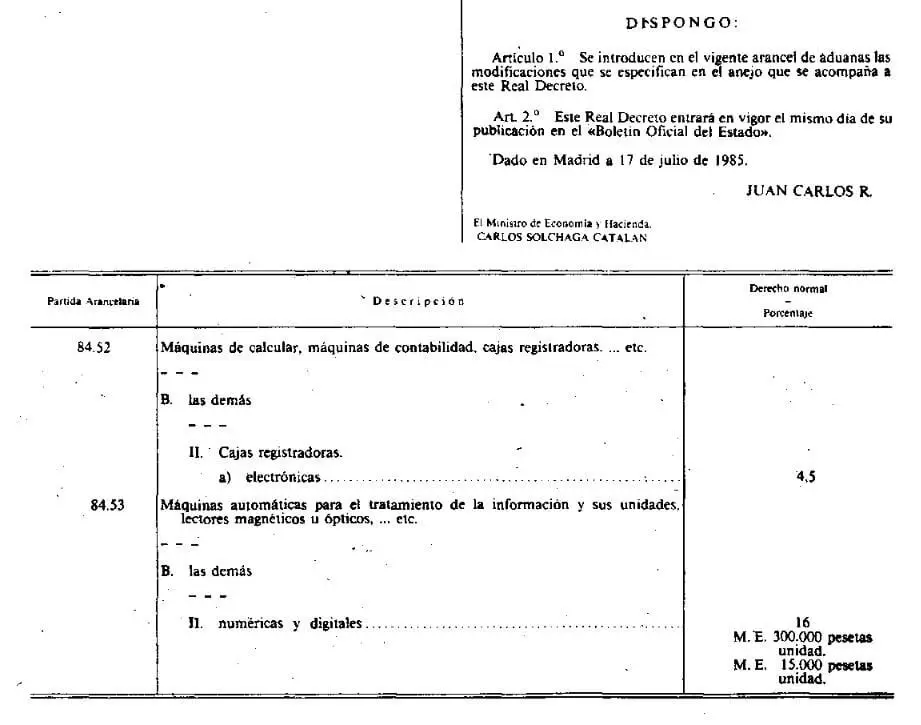
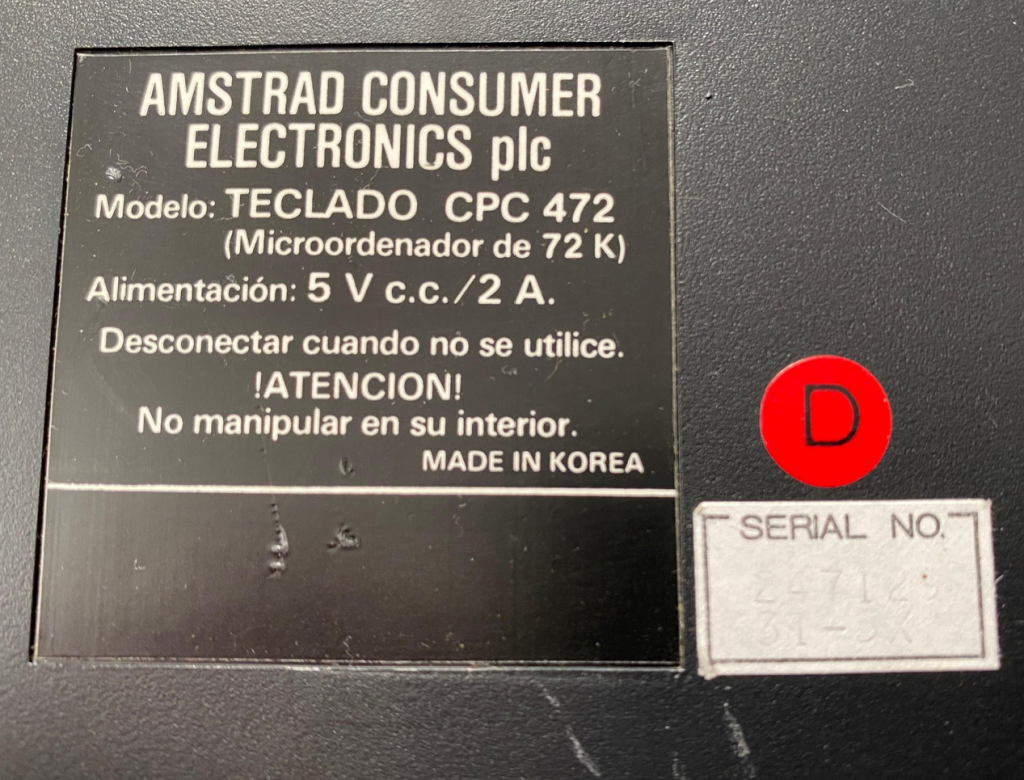
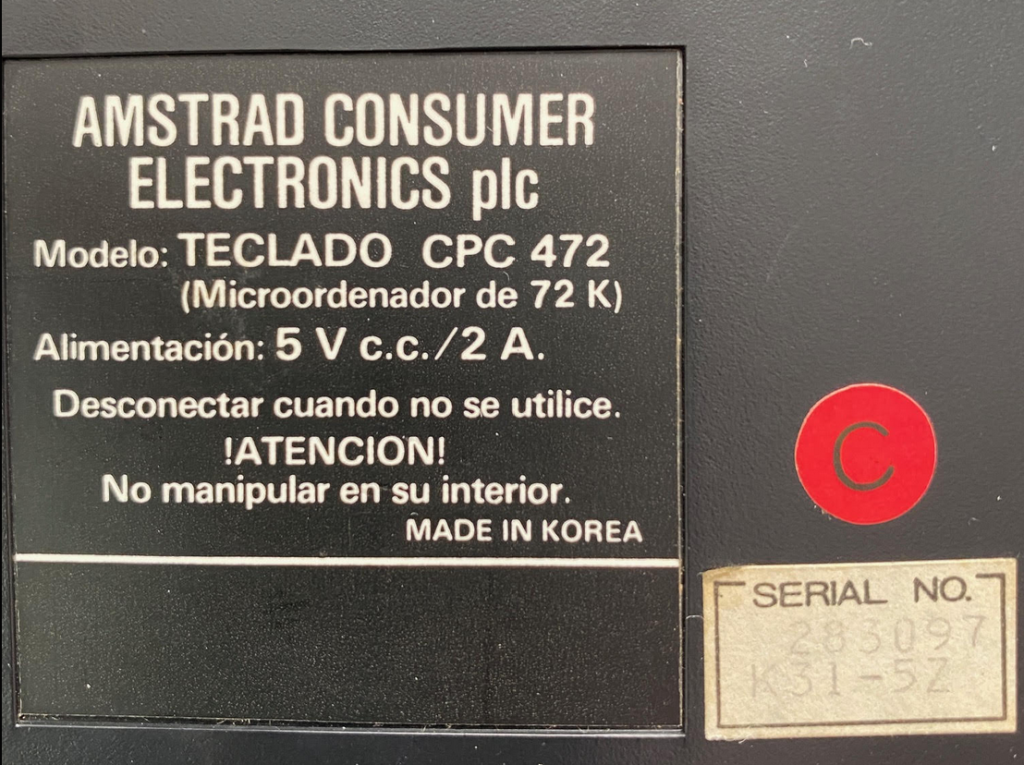
I have one with Serial:
282925
K31-5Z
I could send you a photo of the Label if you want to post it 🙂
yes please !
so yours is from Korean factory 31, and was made in December 1985, can I see a photo of the serial number and your keyboard layout please also
So did the memory actually work? I do not mean in the computer, I know it was fake but did they just buy broken memory OR could you take out the chip and use it elsewhere?
Did the updated ROM state/return 72K total RAM (but 64K available or whatever was a normal value)?
Was there even power going to it or was it completely fake? I get the address lines went prob nowhere.
Was it obvious? I.E. did the cables actually go to the BUS address and data lines making it plausible?
Was it even possible “on paper” to add such an upgrade?
I’ve read reports from others that these 8k chips were faulty, but i’ve never tested one, so theoretically it could be used elsewhere. The ROM was only capable of dealing with 64K so even if the 8k was wired in, it would be ignored, no power going to the extra ram chip. that’s why when you power on a CPC 472 it states clearly on the screen that it is 64K.
“CPC 472 it states clearly on the screen that it is 64K.”
So how they were allowed to sell them, since the fraud was evident immediately when the computer was powered on? I wonder if Spanish police would be still interested of this to open a case, and investigate if I call them. What do you think? I think most of the perpetrators are still alive, so they could be prosecuted for this elaborate scheme… Maybe those xmas sale profits could be also traced and confiscated.
But the device (physical) had 72k inside it so that was enough for getting around the tariff. There would be no point doing anything about it.
Here’s a more accurate description of why and how I was able to pull out that trick.
Firstly, it should be noted we lied in the CPC472 manual. A very professional lie that consisted in saying the additional 8kb of RAM were used by the operating system (Basic). This is key because when you see “64k” on the screen, this is the free memory you have at your disposal, but Basic is supposedly using the extra RAM in a secret space that you cannot access.
Secondly, Spain has one of the most ‘modern’ statute of limitation laws in the world, which means economic crimes expire after 5 or 10 years. And it’s been almost 40 years since our wonderful 472 maneuver.
If you have more questions, you can join as a contestant in The Apprentice.
Cheers,
The AMS before the TRAD
thanks Alan for gracing my humble blog with your presence and wisdom, especially on the subject of the CPC 472, i’m honoured !
cheers
niall